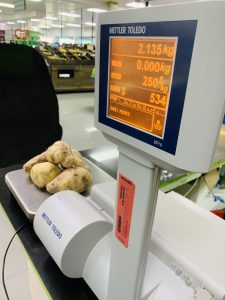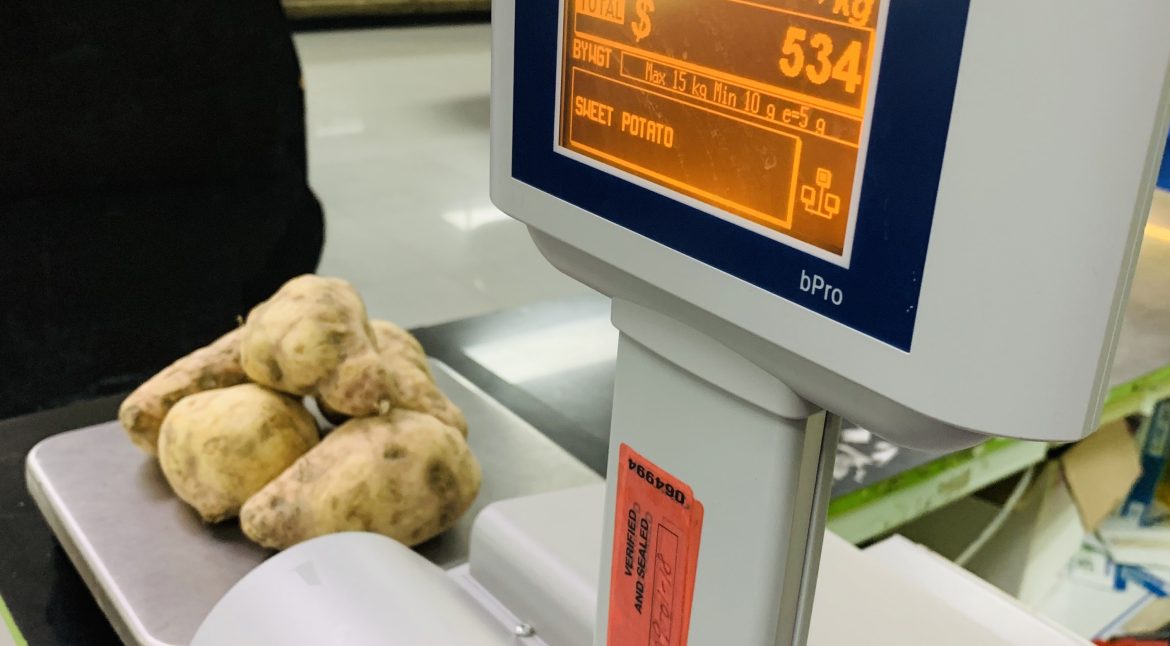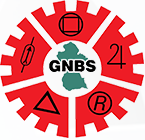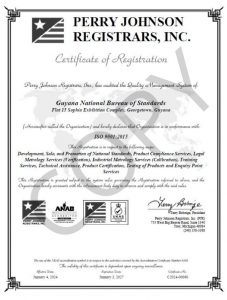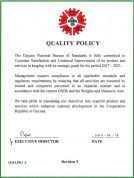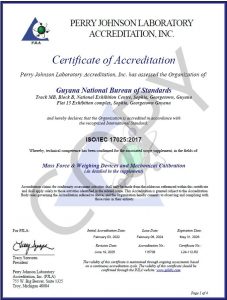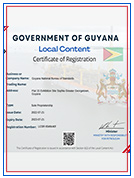The International System of Metric Units as opposed to the Imperial System of Measurement is the legal system of measurement used in Guyana. The system is usually represented as simply S.I., an abbreviation meaning Systeme Internationale or International System. Being a decimal based system, it follows measurements and units that have bases in multiples of ten (10), one such being the kilogram which is used to measure mass. Channa (chick peas), beans and rice are examples of solids food products and should be weighed at the time of sale. Therefore, consumers are encouraged to request these products in grams and kilograms instead of in pints and gallons.
It continues being a practice of consumers to request solid food products using the imperial units for liquids and has continued even after promotion of the metric units. The concern that this raises is that shopkeepers and vendors encourage the practice although they themselves purchase these items in 45 kg bags (by weight). While it is believed that this only occurs in Guyana, resellers are urged to stray from this culture and adhere to the metric system.
Vendors and shopkeepers who engage in practice of selling solid good by volume (liquid measure) need to follow the steps of most of our supermarkets and sell such products by weight (grams and kilograms). Consumers on the other hand, need to demand that such goods be sold to them in the correct manner.
To ensure that both consumers and retailers understand how to use the international system of units, let us look at the unit used for measuring mass commonly referred to as weight:
The SI Base Unit for measuring mass is the kilogram (represented by ‘kg’). When the kilogram is divided by 1000, the result is 1 gram (g) and when the kilogram is multiplied by 1000, the result is 1 metric tonne (t). Therefore 1000 gram = 1 kilogram and 1000 kilogram = 1 tonne.
The units of Mass (Weight)
For everyday transactions especially in the conduct of commerce, there are four commonly used units: the milligram, gram, kilogram and tonne.
Milligram (mg) – This unit is used for measuring very small amounts of substances for example, ingredients in medicines or drugs and some ingredients in recipes. It is the equivalent of 1 gram divided by 1000.
Gram (g) – The gram is used for measuring intermediate amounts. For example, 100 grams of butter, 250 grams of cheese, 500 grams of peas, sugar, flour, etc.
Kilogram (kg) – The Kilogram is used for measuring larger amounts. For example, 1 kilogram of potatoes, 10 kilogram of bananas, 25 kilogram of rice, etc.
For conversion purposes, one kilogram is equivalent to two pounds and three ounces.
Tonne (t) – This unit is used for measuring very large amounts, for example, truckloads of sand or stone, bulk sugar or rice.
Remember! 1000 milligrams (mg) equal 1 gram (g)
1000 grams (g) equal 1 kilogram (kg)
1000 kilograms (kg) equal one tonne (t)
Consumers, you are urged to start requesting solid goods such as rice, peas, onions and potatoes in grams and kilograms. The kilogram should also be used to weigh solid hardware items such as nails, putty and glues that are sold by weight. These goods can be easily and accurately weighed on verified metric scales used in the market place and at stores.
Wholesalers and retailers have a significant role to play by packaging and selling their solid goods in metric quantities. Advertise your goods, and prepare and display price lists in SI quantities.
For further information, please contact the GNBS on Tel: 219-0062, 219-0065, 219-0066, 219-0069, visit our Facebook page @gnbsgy, message us on WhatsApp: 692-GNBS (4627) or visit the GNBS Website: www.gnbsgy.org.
